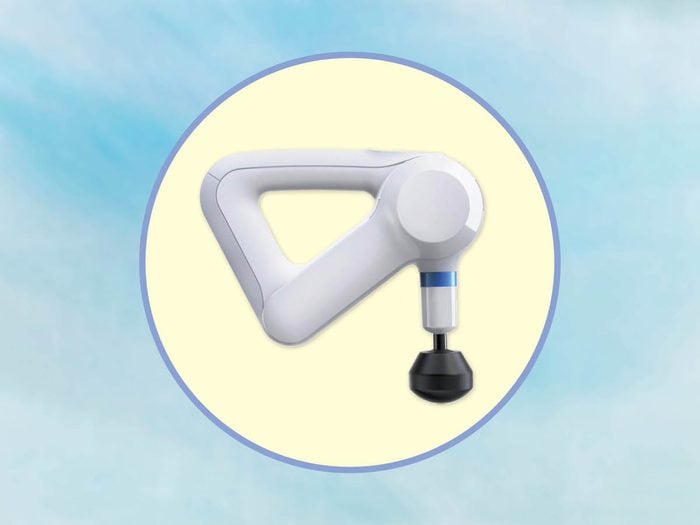
At-Home Massages
There’s no doubt that, for many of us, the sudden switch to the world of WFH has come with some pain—especially the neck, back and shoulder variety. “A lot of people are just working from their dining-room tables, sofas or beds, and that poor setup means straining their bodies, overusing certain muscles, and even bringing out old injuries,” says Grace Cheung, physiotherapist at Vancouver’s Go! Physiotherapy.
You could be feeling it even more if you’re extra sedentary now, with our usual workout routines and daily commutes thrown out of whack too. Stretching at home is helpful but taking things up a notch with a massage tool can fast-track your results. “You can get quicker relief with the help of a tool because it mimics manual therapy release more closely,” explains Rebecca Armstrong, physiotherapist and clinic director at Myodetox Cityplace in Toronto. “It helps you get deeper into the muscle and promotes blood flow.”
To help you pick your implement, we turned to the pros for their go-to tools, and their favourite ways to use them. Whether you go for a $10 fix or are game to make an investment, they’re all gentle enough for daily use so you can ditch the soreness sooner.
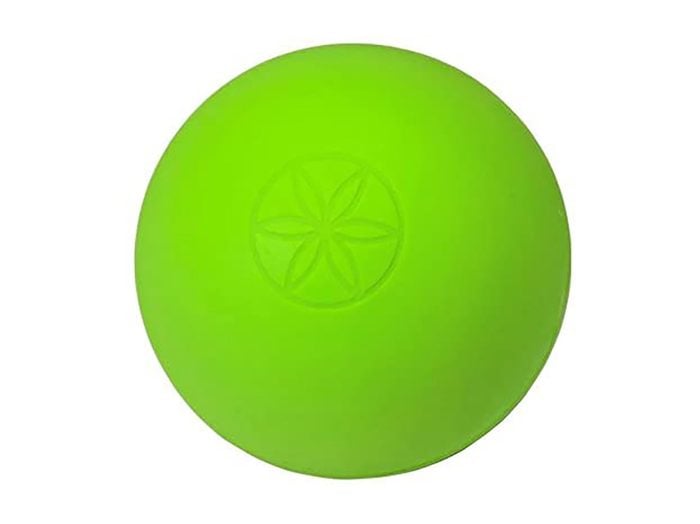
Lacrosse Ball
Why it’s great: “It’s small, portable, affordable and accessible,” says Cheung. And the bang for your (few) bucks is huge: you can use the hard, rubbery ball on almost any muscle, either by rolling it over a tight area or by sinking your weight into a trigger point. “It’s nice because you can get into those smaller areas,” adds Armstrong. (Related: Do you have dead butt syndrome?)
How to use it: You can lie down on the ball, with it positioned wherever you need a release, but if that’s too intense, ease up on the pressure by using it against a wall instead of the floor. Or, try Cheung’s clever trick and, while seated in a high back chair, place the ball behind you and lean back for about 30 seconds to a minute. Bonus: no hands!
Gaiam Restore Ultimate Massage Ball, $10, well.ca
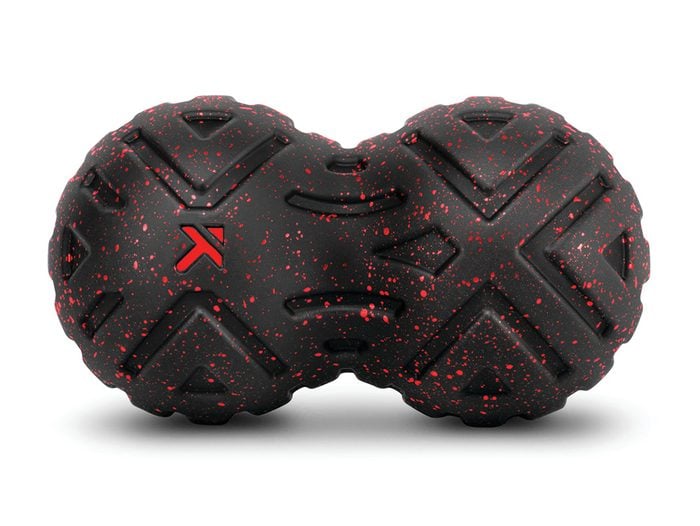
Peanut
Why it’s great: Take what you love about the lacrosse ball and double it. The peanut’s two-headed design is ideal for using along your spine and neck. “You don’t want to put things directly on your spine, but the peanut allows the bony part to sit between the two balls,” says Armstrong. She recommends the tool for releasing the suboccipital muscles, A.K.A. the area right where your head meets your neck and is often tight—and headache-inducing!—for desk-workers.
How to use it: Lying on the floor with your knees bent, place the peanut horizontally right at the base of your skull. Then, lightly tuck your chin to push your neck into the tool. Hold it for 5 seconds then release and repeat for about a minute. “You should feel a bit of relief as you go,” says Armstrong.
Triggerpoint Universal Massage Roller, $27, sportchek.ca
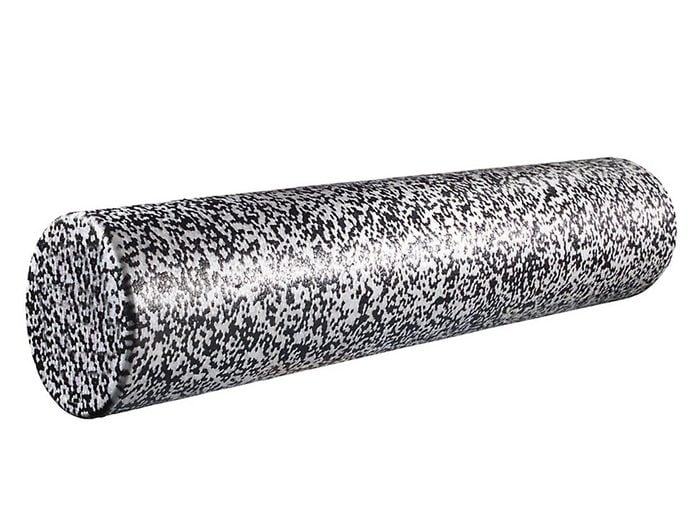
Foam Roller
Why it’s great: “For very sensitive areas, it’s helpful to use something with a larger surface area to distribute the force,” says Cheung. Plus, you can cover off big muscle groups—like your IT bands, quads and calves—faster. You can find foam rollers with different firmness levels, and some add little nubs to help you dig deeper. Pick whatever feels best for you, though a smooth, soft design can help keep things comfortable for newbies.
How to use it: It can take a bit of experimentation (and sometimes, awkward positions) to find your best foam-roll method. No matter which muscles you’re targeting, you’ll need to get down on the floor over the foam roller and glide your body back and forth to work the area. For example, to tackle your quads, lie face down with one thigh on the foam roller and your forearms on the ground, then seesaw yourself to roll from the hip bone to a few inches above your knee (steer clear of joints!).
Everlast 4-Inch EPP Foam Roller, $30, thebay.com
(Related: Why Everyone Is Using a Foam Roller Right Now (and You Should Too))
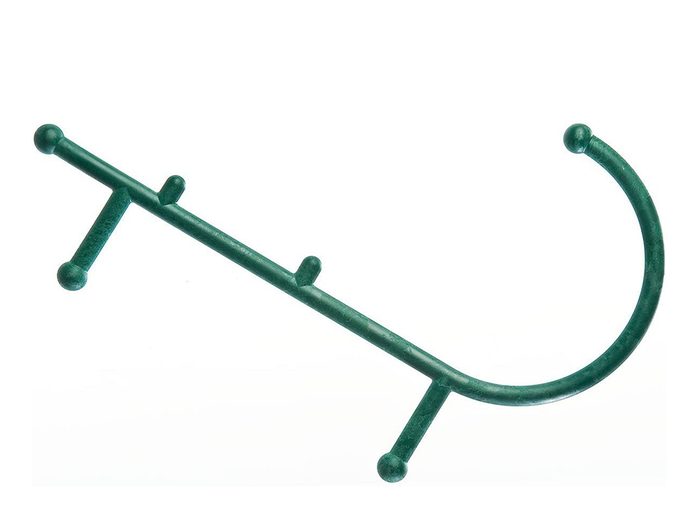
Thera-Cane
Why it’s great: The hook shape lets you get into hard-to-reach spots without having to contort yourself or, even, get off your couch. Ever feel like your shoulders are inching up towards your ears? A Thera-Cane offers an easy way to release those stressed-out traps (short for trapezius, the upper-back muscles that can feel oh-so tender when we’re tense). (Find out why you have shoulder blade pain.)
How to use it: Place the knob at the end of the hook into any sore, squishy—not bony—spots in your upper or mid back, then pull on the handle to add steady pressure for 30 seconds to a minute. If you’re really tight or knotted, it’s likely to hurt, but should still be tolerable. “You don’t want any sharpness or referred nerve pain,” advises Armstrong.
Thera-Cane, $63, amazon.ca
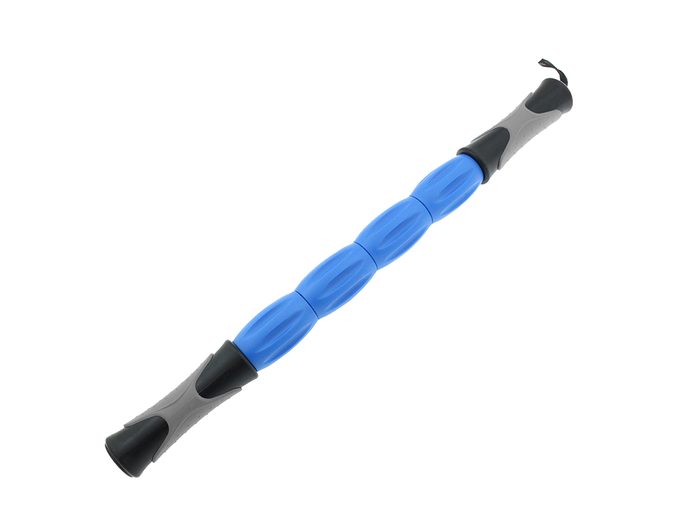
Massage Stick
Why it’s great: Like a skinnier foam roller with handles, a massage stick is great for rolling out your legs without any tricky maneuvering, making it a great option if your mobility makes getting on the floor difficult or if using your full bodyweight feels too intense. “For people who can’t tolerate a lot of pressure, you can sit and lean into it as you roll to get a lighter massage,” says Cheung. The only downfall? Because it requires two hands, it’s not a good option for muscles in the upper body.
How to use it: To work your IT bands, located on the outside of your thighs, start at your hip and roll the stick in light, long strokes along the IT band to above your knee. Once the area gets warmed up, add pressure or adjust the angle to zone in on tender spots, working the area for no more than a minute.
GoZone Basic Massage Stick, $13, walmart.ca
(Related: 6 Surprising Benefits of Massage Therapy)
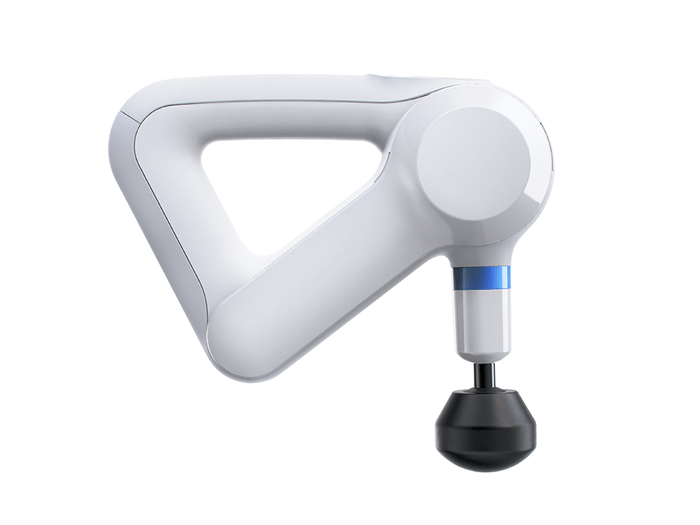
Theragun
Why it’s great: “It’s kind of like a lacrosse ball on steroids,” says Armstrong. The tech device uses what’s called percussive therapy (the deeper-reaching sibling to vibration therapy) to help stimulate blood flow and release trigger points, and its motor does most of the work for you. It’s a pricey investment, but could be worth it if stiffness and soreness are big issues for you. “A lot of my clients really like it for their legs post-run,” Armstrong adds. “They find it helps to shorten recovery time.”
How to use it: “You can use it on your forearms, chest, traps, glutes, thighs, hamstrings—pretty much any meaty, muscle-y area,” says Armstrong. Power it on—she recommends starting on a lower setting and building your way up—and glide the attachment over the area for a max of two minutes. You can also synch newer models up to an app that shows you exactly what to do and controls the settings as you go.
Theragun Elite, $549, theragun.com
Next, Muscle Soreness? Here’s What You’re Missing in Your Workout Routine
